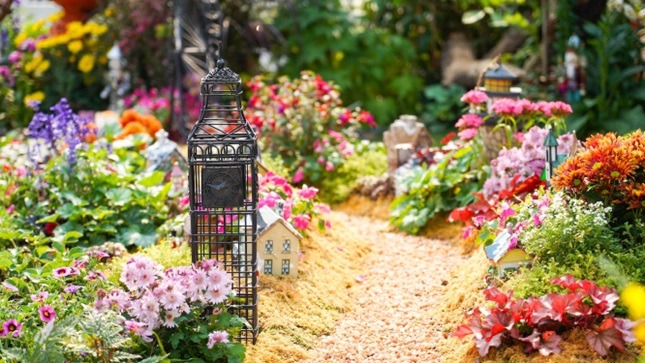Regardless if you have a large garden in the back of the house or a balcony green area, spring is, without doubt, the busiest time of the year for you. You have to handle the indoor spring cleaning but also tidy up the green area and prepare it for the new season. Understandably, it can be quite overwhelming.
The best thing is to start planning while it’s still cold outside; think about how you want the landscape to look, pick the plants you want to grow, and make a list with the essentials required to bring your garden to life.
Spring is when your bulbs and seeds grow into plants from the slightly warmed earth, so preparing the green area as early as possible can offer them a jump start. And because we want garden prep to be a pleasure rather than a chore, we provide a couple of tips and pointers in this article to help you get your space in top shape.
Have a spring inspection
On one of the following warm days, get outside the house with a notepad and inspect the look of each element in your garden. It’s time to see what happened with the flowers from the planters while you were taking shelter indoors during the cold days of winter and all the other elements that made your green area a livelier space during the summer. Write down the following:
- Did the snow, ice, or freezing temperatures damage any plants?
- Do you need to clean some beds?
- How are the hardscaping elements (sheds, benches, fences, walls) doing?
- Is there any evidence of animal burrows from moles, voles, skunks, rabbits, or chipmunks?
- Handle the hardscaping problems first
Now that you know how extensive the damage to your garden is, focus your energy on fixing it. It’s recommended to first start with hardscaping because it’s more challenging to repair damaged benches, sheds, fences, or walls. Clean out the gutters, level out the stepping stones, fix all the outdoor furniture elements, and replace the broken flower pots with new ones like those from Elho. It’s easier to complete all these tasks while the plants and flowers are still dormant because you won’t interfere with their growth.
This is also the ideal moment to plan and build new garden areas and modify the existing ones. If the weather allows it, you can also add a fresh coat of paint on benches and fences and sealant to all wood elements.
Test and feed the soil
It’s advisable to test the soil every 3-5 years to ensure it contains the necessary organic materials and nutrients to allow your plants to thrive. You might find out for example, that it’s rich in phosphorus, and you have to stay away from fertilisers that contain it. You can find online instructions on collecting and where to take soil samples in your area to test them.
When the soil tests arrive, head to the local garden centre and discuss the specific products you need to use with a specialist. It’s recommended to topdress the soil with a layer of compost before planting the seed and bulbs to make it easier for them to emerge.
Order seeds and bulbs
How do you want your garden to look this year? If you already have a picture in mind or pinned all your ideas on your Pinterest board, you can order seeds and bulbs online. It’s the perfect thing to do during one of the windy days when you cannot get out of the house to get the green area ready. Suppose you want to plant gladioli, lilies, or ranunculi; make sure to order them as soon as possible because they require early-spring planting.
Before the seeds and bulbs arrive, research online to find out how each plant variety must be planted, cared for, and pruned, to ensure they all thrive.
Pick-up some ready-to-plant flowers from the local shop
You might need more patience to wait for the bulbs you plant during spring to bloom and want instant colour outdoors. In this case, you can visit the local plant nursery and pick some fuss-free flowers that bloom as soon as the first rays of the sun warm the outdoors. Buy plants that you can grow in pots or directly in flower beds to create layers. The trailing clematis Ovation is an example of a flower that blooms in April and delights the eye with a vibrant lime-green hue.
Start seeding indoors
Even if the growing season didn’t start just yet, you could still plant your favourite flowers to jumpstart the season. Most seeds for edibles and perennials can be started indoors, so you can give your garden a head start this spring. This way, your plants will start growing before the predicted planting date, which is often around late March. Make a plan for the landscape to know what to plant indoors, and create a planting schedule.
Suppose you start seeds indoors, follow the instructions on their packets to find out more about the time to germination and particular requirements. You’ll also need some essentials for this task, like containers, seeds, some sterile potting mix, and labels, so you can keep track of what is growing in each pot.
Transplant shrubs and divide perennials
Early spring is perfect for relocating flowers, shrubs, and perennials that have grown large enough to split or outgrow their design spots. It’s best to transplant shrubs and divide perennials before they wake up from the dormancy state to not disrupt their bloom cycle.
Even evergreen shrubs can be moved during this time of the year because it’ll give them enough time to establish their roots at their new home. Moving plants while they’re still dormant puts less stress on them and makes it more likely for them to grow healthily in the spring.
We wish you a blooming spring and hope the above recommendations help you grow the garden of your dreams.

